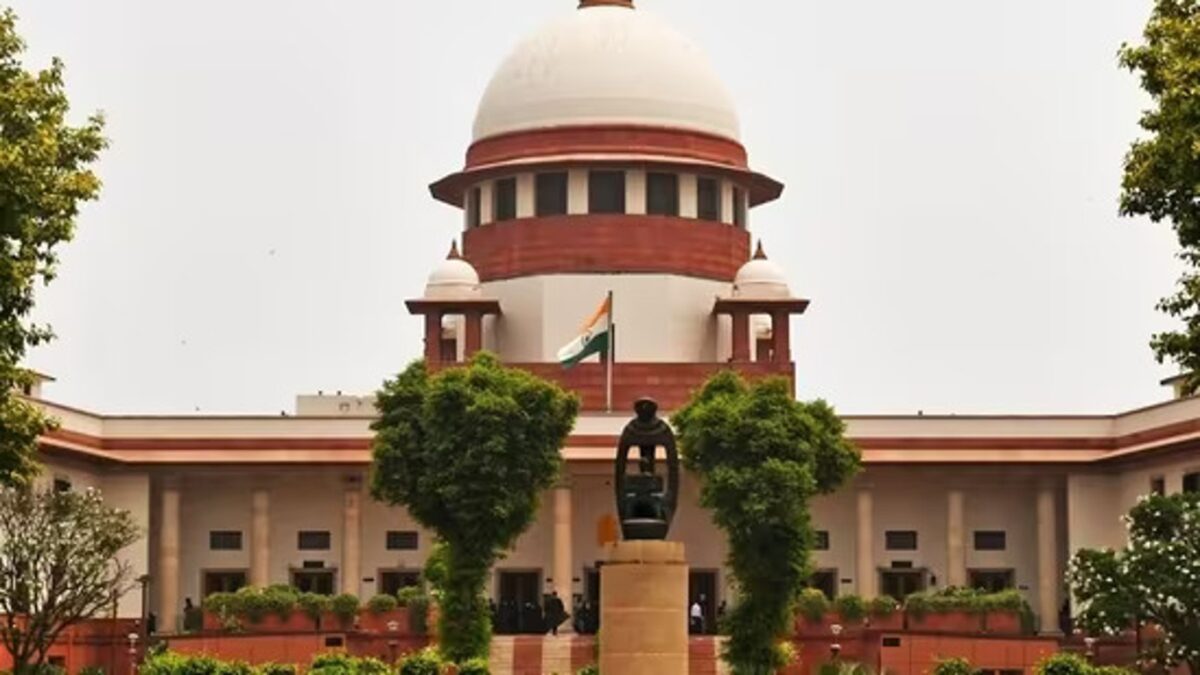Laws complementing The Sexual Harassment of Women at Workplace (Prevention, Prohibition and Redressal) Act, 2013

In December 2013, the Vishakha guidelines were superseded by The Sexual Harassment of Women at Workplace (Prevention, Prohibition and Redressal) Act, 2013. The new act kept the essence of the Vishakha Guidelines while adding more provisions.
In the Vishakha Guidelines, the definition of the term “workplace” was confined to the tradition office set-up where there was a clear employer-employee relation established. The Sexual Harassment of Women at Workplace (Prevention, Prohibition and Redressal) Act, 2013 takes this definition much further by including:
- Any organization, department, undertaking, establishment, enterprise, institution, office, branch or unit which is established, owned, controlled or financed by the Appropriate Government.
Type of Workplace Appropriate Government
A workplace funded or controlled by the Central Government Central Government
A workplace funded or controlled by the State Government State Government
A workplace which is not a government organization State Government
- Any private sector organization or private venture, enterprise, institution, establishment, society, trust or NGO carrying on commercial, professional, vocational, educational, entertainment, industrial, health services or financial activities such as production, supply, sale, distribution or service.
- Hospitals or nursing homes
- Any sports institute, stadium, sports complex or competition or games venue.
However, The Sexual Harassment of Women at Workplace (Prevention, Prohibition and Redressal) Act, 2013 acts as an umbrella act, and gives general guidelines that the above-mentioned establishments must mandatorily follow or face punishment. Besides the guidelines set down by the Act, other Acts compliment it and lay down industry/community specific guidelines.
The Industrial Disputes Act, 1947
The Industrial Disputes Act, 1947 provides machinery and procedure for the investigation of industrial disputes (in the organized sector) by negotiations. It extends to the whole of India and applies to every Industrial Establishment carrying on any business, trade, manufacture or distribution of goods and services irrespective of the number of workmen employed therein.
Under Section 2(A), The Industrial Disputes Act, 1947 allows workers to approach the labour tribunal in case of wrongful dismissal, as a consequence of not complying with the sexual demands of the employer. Sexual harassment can also be interpreted under the term ‘Unfair Labour Practices’, given by the act.
The Industrial Employment (Standing Orders) Act, 1946
The Industrial Employment (Standing Orders) Act, 1946 aims to create uniform standing orders in respect to workers, factories and working relationships. It ensures that the terms and conditions of the employment are known to the employee and thus to minimise exploitation of the workers.
The act classified sexual harassment as misconduct which might become the grounds of suspension or dismissal.
Educational Institutes
The Sexual Harassment of Women in Higher Education Institution (HEI) is prohibited by the University Grants Commission (Prevention, Prohibition and Redressal) Act, 1956, along with The Sexual Harassment of Women at the Workplace (Prevention, Prohibition and Redressal) Act, 2013. The act acts on all HEIs Campuses which includes all facilities such as Libraries, Laboratories, Lecture Halls, Residence Halls, Toilets, Hostels, Dining Halls, Canteens, Parking Area and Parks. The Act also covers within its scope ‘Extended Campus’ such as transportation provided the purpose of commuting to and from the institution, and locations outside the institutions such as sports meets, cultural fests etc. where the employee or student of the HEI is participating.
The act prohibits sexual harassment of women in not only employer-employee relations, but also student-student and student-employee relations. There is no difference in the definition of the term ‘sexual harassment’ between the UGC guidelines and SHW Act. There is also the inclusion of Third Party Harassment which refers to a situation where Sexual Harassment occurs because of the conduct of any outsider, who is not an employee or student of the Higher Education Institution but a visitor to the Institution.
The UGC guidelines mandate the reconstitution of GSCASHs (Gender Sensitization Committee Against Sexual Harassment) as an Internal Complain Committee, and the organisation of orientations and training sessions for the members of ICC. The act also gives states the Responsibilities of Higher Education Institutions to ensure that their campuses are safe and inclusive towards Women, and they have a zero-tolerance policy towards sexual harassment.
In 2015, the then HRD Minister Smriti Irani released data on 75 sexual harassment cases in HEIs between April 2014 and March 2015. These figures are from a report received by the UGC from 84 universities about cases of sexual harassment against women lecturers, professor and research scholars. This data is unable to lead to a solid conclusion since nearly 182 Universities failed to provide any data for the research.
Central Civil Services (Conduct) Rules, 1964
The Central Civil Services (Conduct) Rules, 1964 were ratified with the aim to state the rules of conduct for Government Servants which would ensure they maintain integrity while performing their duties. The act states all activities, which undertaken by a Government Servant, will be considered unbecoming of him.
These rules apply to every person appointed to a civil service or post (Including a Civilian in Defence Services) in connection with the affairs of the Union, with the exception of
- Railways Servants as defined in Section 3 of the Indian Railways Act, 1890
- Member of an All India Service
- Holder of any post in respect of which the President has, by a general or special order directed that the rules shall not apply.
Section 3(C) of the act states rules towards the prohibition of sexual harassment of working women. It is observed that the section defines the terms “sexual harassment” and “workplace” similarly to the Sexual Harassment of Women at the Workplace Act, 2013.
The rules of regulation of Civil Servants convicted of Sexual Harassment of Women at the workplace are given under the Central Civil Services (Classification, Control and Appeal) Rules, 1965.
Central Civil Services (Classification, Control and Appeal) Rules, 1965
As per the provisions to Rule 14 (2) of CCS Rules, in case of complaints of sexual harassment, the Complaints Committee set up in each Ministry or Department (Under the SHW Act, 2013) for inquiring into such complaints shall also be deemed to be the Inquiring authority appointed by the Disciplinary Authority for these rules.
The complimentary nature of the CCS in relation to the SHWW, 2013 is visible here. The Complaints Committees are not only the Investigative and Disciplinary Authority (Under the SHW Act, 2013) but also the Inquiring Authority as under Section 14(2) under the CCS. It is necessary for the ICC in Government Institutions to clearly understand their dual role.
Hospitals
Sexual Harassment in health care is highly prevalent. In a study conducted by an International NGO, Population Council, 77 of the 135 women doctors and nurses, working four hospitals in Kolkata, admitted sexual harassment. As many as 45 reported psychological harassment, 41 reported verbal harassments, 21 reported unwanted touch and 16 reported sexual gestures and exhibitionism. The study also revealed that just 20 of the 135 women interviews were aware of the Supreme Court’s guideline on sexual harassment.
Hospitals and Nursing homes fall under the ambit of the Sexual Harassment of Women at Workplace (Prevention, Prohibition and Redressal) Act, 2013. They are mandated to follow all guidelines of the act, to ensure their campuses are safe for the women working therein.
Abuse of professional position by improper conduct with patient or by maintaining an improper association with a patient will render disciplinary action as provided under the Indian Medical Council Act, 1956 or the Concerned State Medical Council Act.
Day-Care, Pre-Schools, and Schools
The Ministry of Women and Child Development, in 2012, championed the introduction of the Protection of Children from Sexual Offences (POCSO) Act, 2012.
The act defines a child as any person below eighteen years age, and regards the best interests and well-being of the child as most important to ensure the healthy, physical, emotional, intellectual and social development of the child. The act defines different forms of sexual abuse – penetrative and non-penetrative assault, sexual harassment and pornography.
Section 11 of the Act deals with Sexual Harassment of the Child. The punishment for offenders under this section is given under Section 12 of the act – 3 years of imprisonment and fine.
Sexual Harassment as under the Indian Penal Code
Section 294 of the Indian penal Code lays down the punishment for obscene acts or words in public. Singing lewd songs directed at women in any public space is considered sexual harassment under Section 294. Offenders under this section can be jailed up to 3 months, or fined, or both.
Outraging the modesty of a woman either through words or gestures is an offence under Section 354.
- Demanding sexual favours despite indication of disinterest is a crime under IPC section 354(A). The accused under this section can either face jail time ranging from 1-3 years, fine or, both.
- Under Section 354(B), assault or use of force on a woman with the intention to disrobe her or compel her to be naked are punishable with imprisonment for a term ranging from minimum 3 to maximum 7 years. Even abetment of disrobing has been made a punishable offence under this section.
- Section 354(C) of the IPC makes voyeurism a punishable offence. Any man who watches, or captures the image of a woman engaging in a private act in circumstances where she would usually have the expectation of not being observed; or disseminates such image without her consent will be punished with imprisonment for a minimum term of one year, and on subsequent conviction shall entail a minimum imprisonment for three years.
- Following someone without their knowledge counts as stalking and is an act of Sexual harassment as per section 354(D). The perpetrators can face jail time ranging 3-5 years, or fine, or both.
Morphing pictures of a woman and sharing them with an intent to harass and defame her is a crime as per Section 499 if the IPC. Punishment may include imprisonment up to 2 years, or fine, or both.
If a woman’s clear refusal to someone’s sexual advances is met by threats to harass her, either physically or by tainting her reputation or property, it is a crime under Section 503 of the IPC. The perpetrator(s) can face jail time of 2 years, or fine, or both.
Uttering any word or making any gesture intended to insult the modesty of a woman is an offence under Section 509 of the IPC. It is punishable by imprisonment for 1 year, or fine, or both.
Sexual Harassment and the Violation of a Woman’s privacy as Under the Information Technology Act, 2000
Section 66 (E) of the Information Technology Act, 2000 states the punishment for violation of privacy. Anyone intentionally or knowingly, capturing or transmitting the naked or undergarment clad areas of human anatomy of any person without his or her consent violates the privacy of that person. Such an offence is punishable with imprisonment up to 3 years or with fine up to 2 Lakh Rupees or with both.
Conclusion
While the Sexual Harassment of Women at Workplace (Prevention, Prohibition and Redressal) Act, 2013 makes great strides in safeguarding women in the workplace, the above mentioned laws ensure that sexual harassment is curbed in all industries, and towards women of all ages and backgrounds. An important take away from this write-up, is the lack of Industry specific data on the compliance with laws that prohibit the Sexual Harassment of women, without which, the complete story may be forever untold.
Read our insights about diversity, legal updates and industry knowledge on workplace inclusion at Ungender Insights. Visit our Blog.
Sign up to stay up-to-date with our free e-mail newsletter.
The above insights are a product of our learning from our advisory work at Ungender. Our Team specialises in advising workplaces on gender centric laws.
or email us at contact@ungender.in




